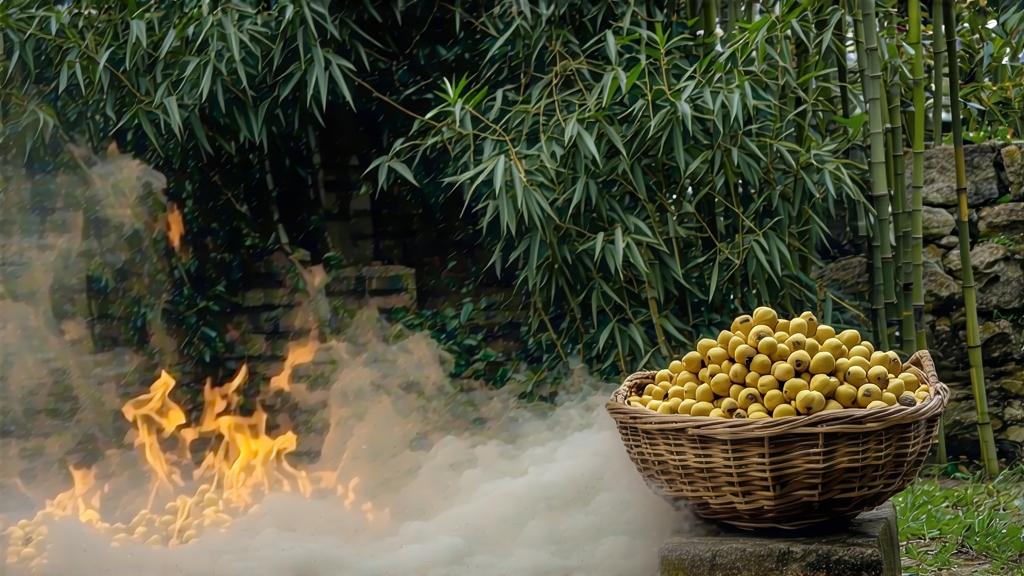
Hidden high above the Sichuan basin, where perpetual cloud veils knife-edge ridges of the Meng Ding range, a tea once reserved for emperors still unfurls its buttery fragrance each April. Meng Ding Huang Ya—literally “Yellow Bud from Meng Peak”—is the least-known yet most aristocratic member of China’s tiny yellow-tea family. While green tea dominates export statistics and dark pu-erh fills auction headlines, yellow tea occupies a whisper-thin niche: fewer than two hundred households still master the slow “sealed yellowing” technique that gives the leaf its luminous straw-gold liquor and custard-like sweetness. To understand Meng Ding Huang Ya is to step into a world where time is measured not in minutes but in the gradual shift of chlorophyll to straw, and where the most critical tool is not a machine but the patient hand of a craftsman who can read humidity in the fold of a leaf.
History: from alchemy to tribute
Meng Ding’s tea lore begins in 53 BCE, when the Daoist monk Wu Lizhen planted seven tea bushes on the summit of Shangqing Peak, declaring them “celestial herbs.” By the Tang dynasty (618-907) those bushes—still alive today, cordoned by a marble balustrade—were yielding buds so pale they looked gilt, prompting local magistrates to seal them in silver caskets for the emperor’s spring rites. The Song Annals first record the term “huang cha” in 1068, distinguishing Meng Ding’s yellowed buds from the greener teas of neighboring counties. When the Ming Hongwu Emperor abolished compressed tribute cakes in 1391, loose Meng Ding Huang Ya became one of only eight teas permitted to ride the imperial courier horses straight to the Forbidden City. European travelers tasted it briefly in 1904 when Sichuan’s viceroy sent a chest to the St. Louis World’s Fair, but civil war and the collapse of Qing logistics erased the tea from Western memory. It resurfaced only in 1959, when Premier Zhou Enlai requested a revival batch to entertain Prince Sihanouk; the same state-owned farm still supplies diplomatic gifts, yet less than 800 kg per year leave the mountain.
Micro-terroir: why the bud turns yellow naturally
Meng Ding sits at 29° N, 1,450 m above sea level, sandwiched between the Min River’s cold canyon air and warm updrafts from the Sichuan basin. The clash creates 220 fog-bound days annually, filtering sunlight into a soft, blue-green glow that forces the tea bush to synthesize extra theanine and reduces bitter catechins. Local cultivar “Meng Ding Qunti”—a seed-propagated landrace rather than cloned hybrid—develops unusually plump buds, each sheathed in down so silvery it resembles frost. The yellowing process begins the moment a picker snaps the stem: the bud’s internal enzymes remain hyper-active at the mountain’s 85 % relative humidity, oxidizing chlorophyll to pheophytin even before the leaf reaches the village workshop. In short, Meng Ding Huang Ya is pre-programmed by its terroir to turn gold; the craftsman merely guides what nature has already decided.
Harvest calendar: one moon, three grades
Plucking starts when the Chinese toon tree reddens—around Qingming festival (4 April)—and ends before Grain Rain (20 April). Only the bud, or the bud plus half-open first leaf, is taken. Within that three-week window three grades are sorted in the field:
- “Gold Tip” (Jinzhen): 100 % single buds, 1.5–2 cm long, downy, needle-straight.
- “Small Leaf Yellow”: bud and one leaf just unfolding, no longer than 2.5 cm.
- “Large Leaf Yellow”: bud and two leaves, reserved for domestic restaurant service; rarely exported.
A seasoned picker gathers barely 400 g fresh leaf in a dawn shift; 5 kg of fresh material shrink to 1 kg finished tea after the yellowing cycle.
Craft: the four “slow fires”
Unlike green tea’s quick kill-green, Meng Ding Huang Ya undergoes four consecutive stages that stretch across 72–96 hours, each nicknamed a “slow fire.”
- Sha Qing – “Killing the green” at 140 °C on a curved bamboo wok, but only 3–4 min, just enough to rupture 60 % of leaf cells. The leaf remains 30 % alive, setting the stage for later enzym